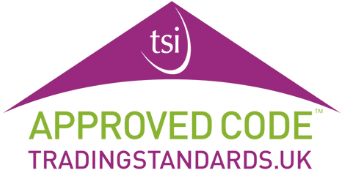Investing in property is generally considered an excellent way to spend money.
The UK housing market has a strong track record of improving year-on-year, meaning that if all goes well, you can sell a house for more than you bought it for. Furthermore, if tenants are living in the property that you own, you can turn it into an additional source of income.
You can invest in property in several ways if you have a large enough deposit. Purchasing a Buy-to-let house is one method – and opting for a residential mortgage is another.
You must be aware of the differences between these two types of purchases before making a decision. Keep reading to learn more.
What is a buy-to-let mortgage?
With a buy-to-let mortgage, you need a larger deposit than is usually required with a residential mortgage. With the latter, a 5% or 10% deposit is often accepted, but lenders usually require around 25% with a Buy-to-let.
Your mortgage payments will usually be interest-only, with a bill for the total loan due at the end of your term. This means that your monthly repayments are typically lower than an equivalent property on a residential mortgage. The idea is that your tenant covers the costs of your mortgage, so you continue to make a profit on the house and can then sell it for more than you bought it for in the future.
You are not allowed to live in a buy-to-let property that you own. Furthermore, the sum you are allowed to borrow is determined by the rent you charge your tenants rather than the amount you earn.
When your mortgage term ends, you can either pay off the remainder of the property so you own it outright, or you can choose to sell it. Most people choose the latter option so they can cash in and capitalise on the property’s (hopefully) growth in price. However, owning a house outright can be extremely valuable if you have the finances to do so.
What is a residential mortgage?
While a buy-to-let mortgage can be taken out by either an individual or a company, a residential mortgage is only taken out by individuals. They are far more common than buy-to-let mortgages since the vast majority of people (including first-time buyers) use this product to climb the property ladder.
Another distinction with buy-to-let mortgages is that residential mortgages are not interest-only, and with each repayment, you are slowly increasing your equity in the property itself. Residential mortgages are also regulated by the Financial Conduct Authority (FCA), whereas buy-to-lets are often not.
How common are buy-to-let mortgages?
In a recent calendar year, more than 211,000 buy-to-let mortgages were approved by UK lenders and occupied 13.6% of total mortgage lending for the year. By contrast, residential mortgages represent more than 50% of lending in the UK and are a far more common product.
Are residential mortgages becoming less affordable?
In recent years, the difference between the average UK income and the price of a typical property has got much wider. This means that houses are less affordable than they were in the past – and by extension, residential mortgages are, too.
Your ability to get a residential mortgage depends on the size of your deposit, as well as your salary. In most cases, a lender expects a 10% deposit (or more) for a residential mortgage, but with property prices continuously going up, this is getting higher and higher.
Likewise, a bank usually lends between 4 and 5 times your salary, which means that, for a property that costs £300,000, you will need at least a £50,000 salary to stand a chance of achieving this.
It is worth noting that interest rates on residential mortgages are usually lower than on buy-to-let mortgages. This makes residential mortgages a more affordable option.
What causes someone to take out a buy-to-let mortgage?
Buy-to-let mortgages are often used as an investment opportunity. By receiving a regular income from the tenants’ payments, you can make a month-on-month profit on your investment. Furthermore, if the house increases in value by the time you decide to sell, you can make an even larger profit.
Companies often take out a buy-to-let mortgage if they have a large sum that is sitting dormant/not being utilised. While the owners cannot live in the house themselves, the property is generally considered a ‘smart’ investment, and companies can make a remarkable profit if they build up a buy-to-let property portfolio.
Does every lender offer buy-to-let mortgages?
Almost every UK high street bank, building society and specialist lender offers buy-to-let mortgages. Hopefully, this can enable you to compare the different products on offer, and decide which one is best for you. You should also ask the lender for guidance if you have any questions.
Are there different types of buy-to-let mortgages?
Yes, there are different types of buy-to-let mortgages. The vast majority are ‘interest only’ – meaning that you only pay back the interest on your loan and nothing else.
However, you can also get other types of buy-to-let mortgages, such as a fixed, variable, tracker, discount or capped interest rate. You should speak to your bank about whether these offer these products and what each one involves.
If you are interested in renting out a House in Multiple Occupation (HMO), then you will usually need a specific mortgage as well as a licence to achieve this.
If in doubt, you should speak to a mortgage advisor who can guide you on all the options available when getting a buy-to-let mortgage.
Are there different types of residential mortgages?
There are two main categories of residential mortgage: fixed rate and variable rate. With the former, your interest rate does not change for the term that is agreed (usually two or five years), whereas with the latter, it does.
Your residential mortgage may also take different forms, depending on your circumstances. For example, some banks offer 95% mortgages when you are only able to make a 5% deposit. Other lenders offer Guarantor mortgages, which is when a loved one will cover any of your missed payments, should that situation arise.
Lastly, you may choose to get a Joint Mortgage if you are buying the property with someone else.
Is there a limit to how many buy-to-let mortgages I can own?
While you are not limited to the number of buy-to-let mortgages you can own in total, each bank may put a cap on the sum they are willing to lend to a single person. Therefore, once you reach their threshold, you may have to contact other banks for any future mortgages and spread your mortgages out between different organisations.
If you own a buy-to-let property but want to sell it with tenants in situ, then Sold.co.uk can help. Get in touch with us today.













